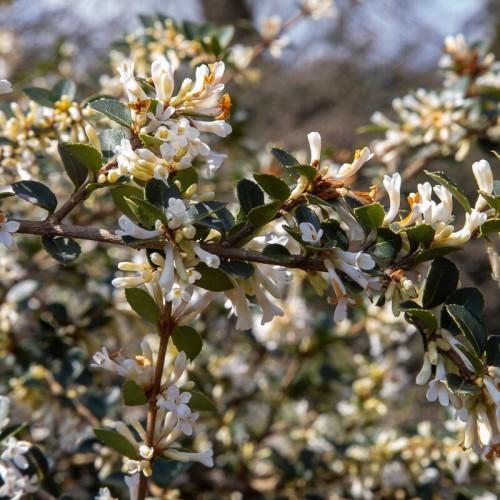
tea olive
Osmanthus delavayi
Cycle:
Perennial
Watering:
Minimum
Hardiness Zone:
3
Flowers:
Flowers In Summer
Sun:
Part sun/part shade
Soil:
Well-drained
Growth Rate:
Low
Drought Tolerant:
Yes
Salt Tolerant:
Yes
Care Level:
Medium
watering
Chinese dunce cap should be watered lightly and only when the soil is slightly dry. Water less often during the winter months, about once every 2 to 3 weeks. Make sure to water deeply, as Chinese dunce cap prefers slow and steady watering. Try to avoid waterlogging or drying out the soil, as this could cause the plant to go dormant. Additionally, the plant may benefit from a light misting once a week, especially during the summer months when the plant is actively growing.
sunlight
Chinese dunce cap is a succulent that enjoys a lot of sunlight exposure in order to thrive. This species is best when kept in direct sunshine for a minimum of 4 to 6 hours every day. As an added bonus, they can tolerate more sun if they are kept in a slightly dryer environment that is shaded more often. During the warmer months of the summer and spring, Chinese dunce cap plants should be moved to a brighter location where they can absorb additional sunlight.
pruning
Chinese dunce cap (Orostachys iwarenge) is a robust, low-maintenance, drought-tolerant succulent. Pruning should be done in the early spring when the plant is just beginning to grow. You should only prune it to remove dead or damaged foliage and to shape the plant. Make sure to use clean, sharp tools like pruning shears or scissors, and avoid over-pruning. The amount to prune should be minimal, no more than a third of the plant. This will ensure that the plant still has enough foliage to stay healthy and vibrant.
